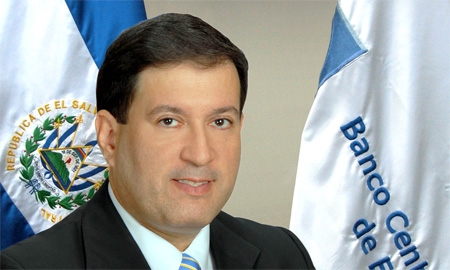
| “WHEN SALVADORANS HAVE HAD THE CHANCES TO DEVELOP THEIR CAPACITIES, THEY HAVE DONE VERY WELL; THE PROOF IS EVIDENT IN HOW SUCCESSFUL THEY ARE WHEN THEY GO TO THE UNITED STATES OR OTHER COUNTRIES.” |
The economy became fully dollarized in 2001, and after a decade of liberalization the domestic banking sector has now become one of the strongest in regional security. International conglomerates have acquired the country's most representative banks, resulting in an injection of almost $1 billion in foreign direct investment (FDI).
A new law seeks to strengthen the supervision of the financial sector by merging the supervisory agencies, giving more regulatory power to the central bank. “It is a project we have been working on for some time, along with a degree of input from the IMF, and the integration model we are following was first tested in Norway, Finland and Denmark,” says Mr. Acevedo. Three supervisory committees, which currently oversee the financial system and banks, pensions, and the stock market, are to be merged into one single entity. The move is also expected to help to boost transparency in the industry.
Remittances from the 2.5 million-strong diaspora are vital to El Salvador’s economy. Most expats have settled in the U.S. and work in the services and construction industries, which are particularly vulnerable to changes in the U.S. economy and have been badly affected in the past couple of years. Nevertheless, remittances continue to rise: inflows increased by 4.3%, totaling $1.8 billion, in the first half of 2011.
In addition to overseas remittances, imports and exports are also key contributors to the national coffers. El Salvador has been promoting greater international trade and a more investment-friendly environment for years, embarking on a wave of privatizations that has touched on sectors such as telecoms and electricity distribution, as well as banking and pension funds. Tourism has been highlighted as a particularly untapped industry that is ripe for foreign activity, as well as infrastructure and energy sectors – particularly in El Salvador’s potential to leverage its solar, wind and hydroelectric energy sources.
Central bank statistics indicate that FDI grew $640 million, or 8.3%, between June 2010 and June 2011, totaling $8.347 million, with the financial sector receiving the greatest attention.
“El Salvador is a small country, as many might say the ‘Tom Thumb of the Americas’, but it is a country with great potential and a population that has great capabilities, like a diamond in the rough,” says Mr. Acevedo. “When Salvadorans have had the chances to develop their capacities, they have done very well; the proof is evident in how successful they are when they go to the United States or other countries. They have excelled, indicating that there is a gross human capital just needing opportunities to develop.”
The numbers at a glance
The Central Bank’s monthly activity index indicates that the economy continues to gather strength, growing by 3.2% year on year in April.
Nominal GDP: (m) 22.640
Real GDP growth: 2.4%
Expenditure on GDP: Private consumption: 2.8%
Gross fixed investment: 3.6%
Exports: 7%
Imports: 7%
Origin of GDP (% real change): Agriculture: 2.1
Industry:1.9
Services:2.5
GDP per head (US$ at PPP): 6.747
Recorded unemployment: 7%
0 COMMENTS